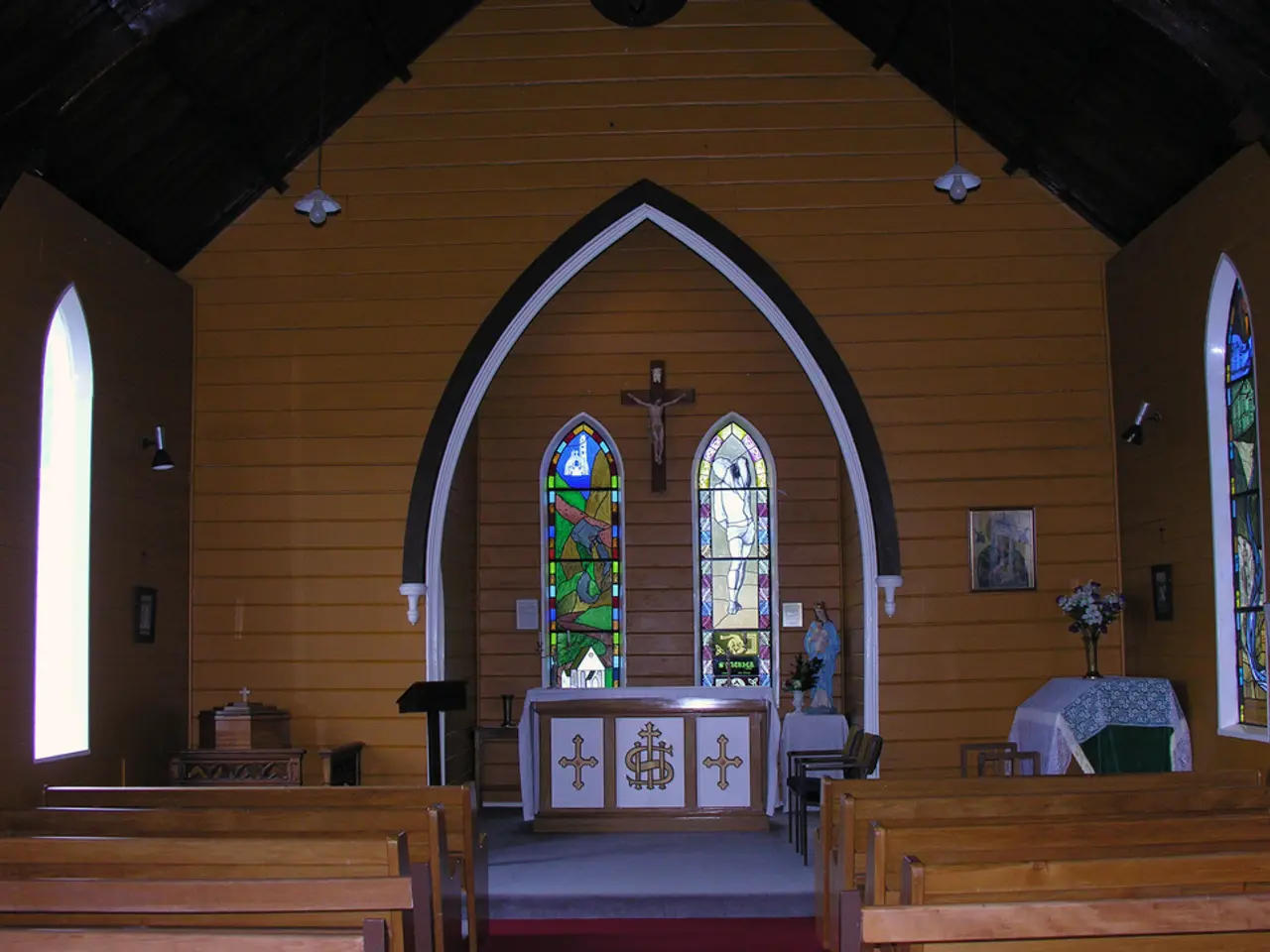Further Insights into the Danzig Paramentenschatz: A Closer Look at Its History and Current State
Danzig's Riches: Uncovering the Hidden Wealth of Danzig
In this article, we delve deeper into the history of the Danzig Paramentenschatz, exploring some intriguing aspects of its journey and its current state.
Rediscovery and Early History
The Danzig Paramentenschatz was rediscovered by chance during restoration work at the beginning of the 19th century, hidden in the walls of the churches and other buildings in Danzig. This discovery sparked interest in the collection, leading to a greater understanding of its importance and historical value.
The Paramentenschatz in Lübeck
In the 1960s, some parts of the Danzig Paramentenschatz were exhibited in Lübeck's Marienkirche. Later, after becoming pastor of the Lutherkirche in Lübeck, Gǘlzow collected the scattered pieces and stored them on the attic of the church on Moislinger Allee.
Today, the St.-Annen-Museum in Lübeck is the current location of the Danzig Paramentenschatz. The museum, located at St.-Annen-Museum 15, 23552 Lübeck, holds a significant part of the collection. The Evangelical Church in Germany is the owner of the Danzig Paramentenschatz.
The Paramentenschatz on Exhibition
The St.-Annen-Museum in Lübeck has a Facebook page named St.AnnenMuseum and an Instagram account st.annenmuseum where visitors can learn more about the museum and its exhibitions, including the Danzig Paramentenschatz.
The Age and Origin of the Paramentenschatz
The oldest parts of the Danzig Paramentenschatz date back to the 14th and 15th centuries. Many of these textiles originated in the Near East, reflecting the city's rich cultural exchange and the wealth of its merchants who made generous gifts to the church.
One fascinating piece from the collection is a garment for Catholic priests that bears an Arabic blessing for a Mameluke prince. This artifact exemplifies the diverse influences that shaped the Danzig Paramentenschatz.
The Danzig Paramentenschatz Today
After the Reformation, the ornate textiles of the Danzig Paramentenschatz became less important, and many pieces were dispersed or hidden. Today, efforts continue to research, preserve, and exhibit this remarkable collection.
The Danzig Paramentenschatz remains a valuable cultural heritage symbolizing the rich and complex history of Danzig/Gdańsk, blending artistic brilliance with the legacy of a city shaped by centuries of change.
For more detailed information about specific pieces, their artistic styles, or particular aspects of Danzig’s history related to the Paramentenschatz, please feel free to ask! Other parts of the Danzig Paramentenschatz are stored in Nuremberg and the Danzig National Museum.
The Danzig Paramentenschatz, which is currently housed at the St.-Annen-Museum in Lübeck, can be further explored through its social media platforms, such as the Facebook page St.AnnenMuseum and Instagram account st.annenmuseum.
The Danzig Paramentenschatz, with its origins dating back to the 14th and 15th centuries, offers a unique insight into the city's rich cultural exchange and the wealth of its merchants, as many textiles in the collection originated from the Near East.




